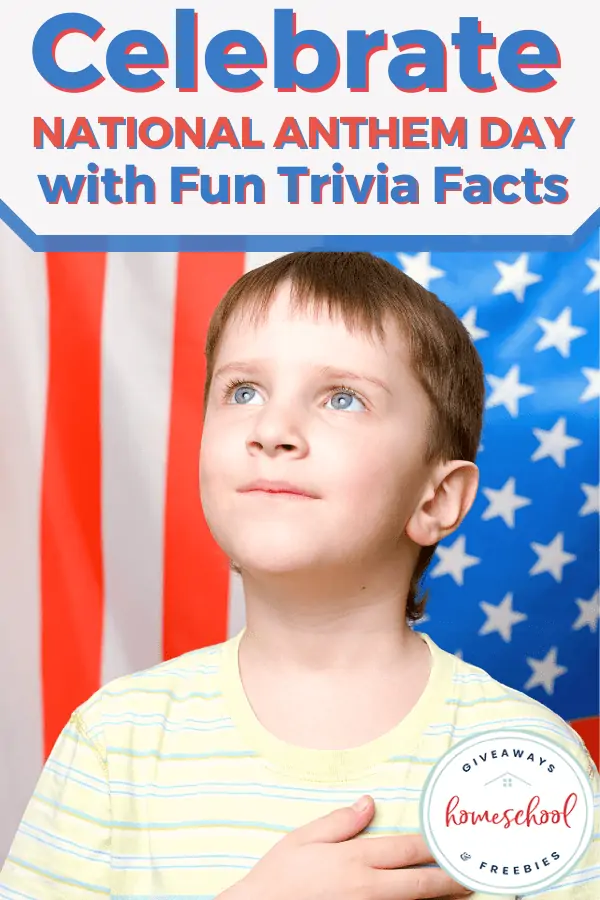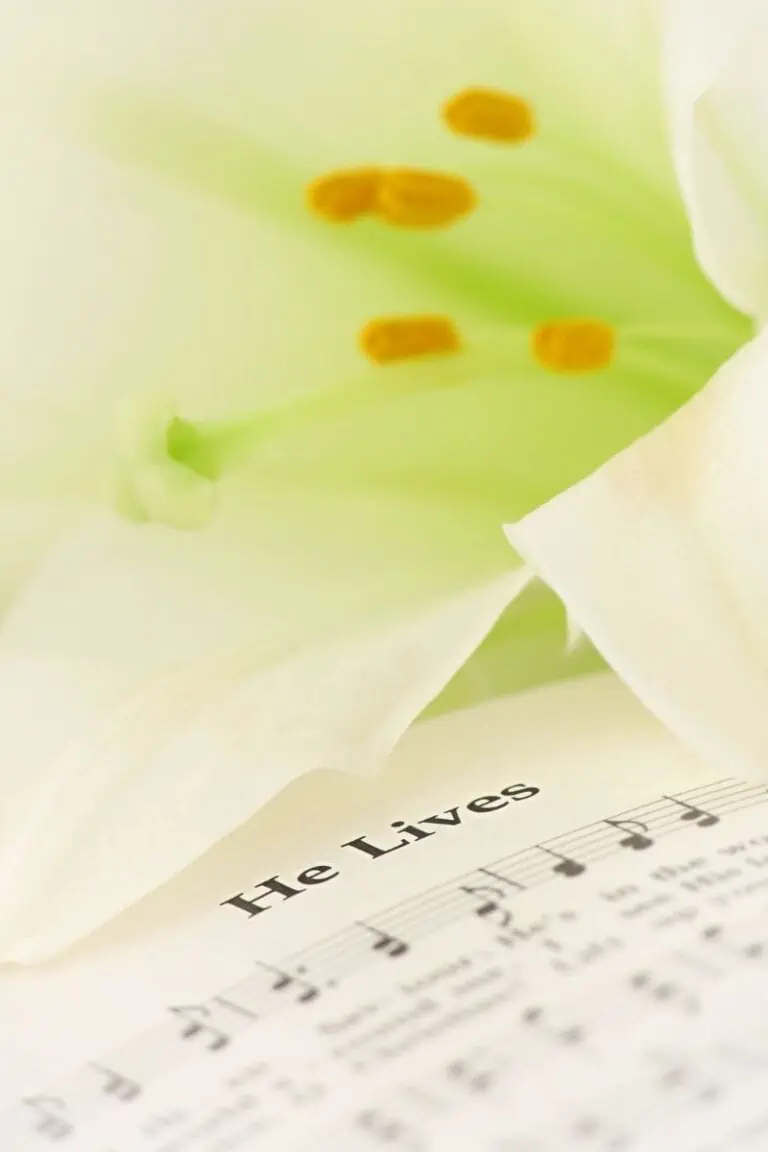Celebrate National Anthem Day with Fun Trivia Facts (March 3)
Published:
January 27, 2022

Contributor:
Alpha Omega Publications
Disclosure: This post may contain affiliate links, meaning if you decide to make a purchase via my links, I may earn a commission at no additional cost to you. See my disclosure for more info.
Learn some fun trivia about the Star Spangled Banner on National Anthem Day. We celebrate our country’s national anthem on March 3rd, which is the day in 1931 that President Herbert Hoover made it our official anthem. But what happened before then and since then? Here’s some trivia for your homeschool.
Bombardment of Fort McHenry
If we go all the way back to the War of 1812, we’ll find the beleaguered American navy fighting for the defense of Fort McHenry. This fort on the Baltimore Harbor was being attacked by the British Navy during the War of 1812. Francis Scott Key was a prisoner aboard a British warship during the bombardment, which lasted through the night of September 13, 1814. When Key saw the red and white stripes of the American flag flying proudly over Fort McHenry the next morning, he knew his country had lived to fight another day. It was a sign of perseverance and resilience against the British attack.
Key penned a poem while still on board the ship, called “Defense of Fort McHenry” where he ends each stanza with the famous phrase: “O’er the land of the free and the home of the brave.” He was amazed to see the American flag over the fort on September 14th “by the dawn’s early light.” With precision and passion, Key wrote about what he saw across the harbor while it was fresh in his memory.
Within a few days, Key’s brother, who was a militia commander at Fort McHenry, set the poem to the old British song To Anacreon in Heaven. It was then published with sheet music on September 20th in the The Baltimore Patriot. The song soon spread across the nation along with the news of the American victory at the Battle of Baltimore.
Interestingly, the original sheet music has an infamous spelling mistake. The original’s subtitle says: “A Pariotic Song”
The Star Spangled Banner
While there are four stanzas to Key’s poem, we typically only sing the first verse. Here is the patriotic song in its entirety. Ask your kids about the words in these stanzas for some National Anthem Day trivia questions!
The Star Spangled Banner
by Francis Scott Key
O say can you see by the dawn’s early light,
What so proudly we hailed at the twilight’s last gleaming,
Whose broad stripes and bright stars through the perilous fight,
O’er the ramparts we watched, were so gallantly streaming?
And the rockets’ red glare, the bombs bursting in air,
Gave proof through the night that our flag was still there;
O say does that star-spangled banner yet wave,
O’er the land of the free and the home of the brave?
On the shore dimly seen through the mists of the deep,
Where the foe’s haughty host in dread silence reposes,
What is that which the breeze, o’er the towering steep,
As it fitfully blows, half conceals, half discloses?
Now it catches the gleam of the morning’s first beam,
In full glory reflected now shines in the stream:
‘Tis the star-spangled banner, O! long may it wave
O’er the land of the free and the home of the brave.
And where is that band who so vauntingly swore
That the havoc of war and the battle’s confusion,
A home and a country, should leave us no more?
Their blood has washed out their foul footsteps’ pollution.
No refuge could save the hireling and slave
From the terror of flight, or the gloom of the grave:
And the star-spangled banner in triumph doth wave,
O’er the land of the free and the home of the brave.
O thus be it ever, when freemen shall stand
Between their loved homes and the war’s desolation.
Blest with vict’ry and peace, may the Heav’n rescued land
Praise the Power that hath made and preserved us a nation!
Then conquer we must, when our cause it is just,
And this be our motto: “In God is our trust.”
And the star-spangled banner in triumph shall wave
O’er the land of the free and the home of the brave!
The Actual Flag
But where did the actual flag flying over Fort McHenry originate?
Major George Armistead was the commander of Fort McHenry in 1813. Knowing that the fort would likely be a target of the British forces, he requested a flag so large that the British would have no trouble seeing it. A Baltimore flag maker named Mary Pickersgill made the 42 x 30 foot army flag for Fort McHenry in 1813. She even made a smaller storm flag that could stand up to the fierce weather and save wear and tear on the larger one.
Here’s a National Anthem Day trivia fact: The smaller storm flag was the one that flew during the battle. The larger garrison flag was raised in the next morning, according to eye witnesses.
After the war, the Armistead family came in possession of the flag. They even cut pieces off of it for souvenirs for friends and family. This tradition of giving away pieces of the flag continued until 1880. Armistead’s grandson finally gave the flag permanently in 1912 to the Smithsonian Institution.
The flag has undergone repairs over the years. You can now view the 42-foot garrison flag on display at the Smithsonian National Museum of American History in Washington, D.C.
Congressional Resolution
Here’s a National Anthem Day trivia question: What was the U.S. national anthem before The Star Spangled Banner?
The United States didn’t have an official anthem before The Star Spangled Banner. Instead, from the early days of the country, Americans sang “Hail Columbia” as their favorite patriotic song. This song was written for the inauguration of George Washington.
During the tumultuous years of the Civil War, the American flag became an increasingly powerful symbol of national unity.
Key’s new song about the flag’s “broad stripes and bright stars” held special significance and was used in patriotic celebrations and military events across the country. President Woodrow Wilson used it in military ceremonies in 1916. But it wasn’t until March 3, 1931, that President Hoover signed the law making The Star Spangled Banner the official national anthem of the United States of America.
While the national anthem is sung at nearly every sporting event, World Series, and other patriotic occasions across the country, the country’s national anthem reminds us of the early days of the Republic when our freedom and independence was in jeopardy. And we continue to say with poet Francis Scott Key: And this be our motto: “In God is our trust.”
Kathleen Kendrick, curator for the Star-Spangled Banner preservation project, sums it up well:
“It’s exciting to realize that you’re looking at the very same flag that Francis Scott Key saw on that September morning in 1814. But the Star-Spangled Banner is more than an artifact—it’s also a national symbol. It evokes powerful emotions and ideas about what it means to be an American.









